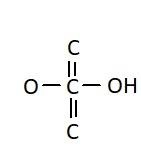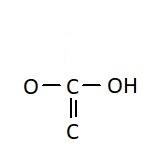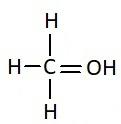
Identify the functional group present in acetic acid:
A.

B.

C.

D.





Answer
549.3k+ views
Hint: Before identifying the functional group in acetic acid, let’s find out what a functional group is. Functional groups are the atoms or groups or molecules which decide the reactivity of the molecules to which they are attached.
Complete step by step answer:
Sometimes, certain elements can also be considered as functional groups. Few examples are oxygen, nitrogen, phosphorus, sulfur etc. Alkanes are generally unreactive when compared to other functional groups. Thus they are not considered as functional groups. But alkenes are considered as functional groups. Alkenes are compounds which are represented as ${{C = C}}$. Similarly, each functional group has their own symbols like alcohols have ${{ - OH}}$ group, ethers have $ - {{O}}$ etc. Alcohols have a suffix “ol” at the end of the chemical name.
Similarly, the chemical names having “acid” as suffix are generally carboxylic acids. They have a carboxyl group attached to it. Carboxylic groups are involved in the carbonyl compounds. Carbonyl means they have a carbon atom which is double bonded to oxygen atom. Carboxylic groups have a carbonyl group, $ - {{C = O}}$ and a hydroxyl group, $ - {{OH}}$. Thus they have two oxygen atoms, i.e. one from carbonyl and one from hydroxyl group. The hydroxyl group and carbonyl group is attached to the same carbon. Moreover, the carboxylic group usually comes at the end of the carbon chain. They are also known as alkanoic acid. The term “oic acid” is used for naming the carboxylic acids. “Acetic” is generally used for compounds having two carbon atoms. Thus the chemical formula of acetic acid is ${{C}}{{{H}}_3}{{COOH}}$. Thus the functional group in acetic acid is represented as:

Hence, the correct option is A.
Note: The functional groups in each type of organic compounds are specific. They have a major role in formation of DNA, proteins, etc. Such functional groups involve hydroxyl $ - {{OH}}$, methyl $ - {{C}}{{{H}}_3}$, amino $ - {{N}}{{{H}}_2}$, carboxyl $ - {{COOH}}$ etc.
Complete step by step answer:
Sometimes, certain elements can also be considered as functional groups. Few examples are oxygen, nitrogen, phosphorus, sulfur etc. Alkanes are generally unreactive when compared to other functional groups. Thus they are not considered as functional groups. But alkenes are considered as functional groups. Alkenes are compounds which are represented as ${{C = C}}$. Similarly, each functional group has their own symbols like alcohols have ${{ - OH}}$ group, ethers have $ - {{O}}$ etc. Alcohols have a suffix “ol” at the end of the chemical name.
Similarly, the chemical names having “acid” as suffix are generally carboxylic acids. They have a carboxyl group attached to it. Carboxylic groups are involved in the carbonyl compounds. Carbonyl means they have a carbon atom which is double bonded to oxygen atom. Carboxylic groups have a carbonyl group, $ - {{C = O}}$ and a hydroxyl group, $ - {{OH}}$. Thus they have two oxygen atoms, i.e. one from carbonyl and one from hydroxyl group. The hydroxyl group and carbonyl group is attached to the same carbon. Moreover, the carboxylic group usually comes at the end of the carbon chain. They are also known as alkanoic acid. The term “oic acid” is used for naming the carboxylic acids. “Acetic” is generally used for compounds having two carbon atoms. Thus the chemical formula of acetic acid is ${{C}}{{{H}}_3}{{COOH}}$. Thus the functional group in acetic acid is represented as:

Hence, the correct option is A.
Note: The functional groups in each type of organic compounds are specific. They have a major role in formation of DNA, proteins, etc. Such functional groups involve hydroxyl $ - {{OH}}$, methyl $ - {{C}}{{{H}}_3}$, amino $ - {{N}}{{{H}}_2}$, carboxyl $ - {{COOH}}$ etc.
Recently Updated Pages
Master Class 11 Social Science: Engaging Questions & Answers for Success

Master Class 11 Physics: Engaging Questions & Answers for Success

Master Class 11 Maths: Engaging Questions & Answers for Success

Master Class 11 Economics: Engaging Questions & Answers for Success

Master Class 11 Computer Science: Engaging Questions & Answers for Success

Master Class 11 Chemistry: Engaging Questions & Answers for Success

Trending doubts
What is meant by exothermic and endothermic reactions class 11 chemistry CBSE

10 examples of friction in our daily life

One Metric ton is equal to kg A 10000 B 1000 C 100 class 11 physics CBSE

1 Quintal is equal to a 110 kg b 10 kg c 100kg d 1000 class 11 physics CBSE

Difference Between Prokaryotic Cells and Eukaryotic Cells

The camels hump is made of which tissues a Skeletal class 11 biology CBSE




